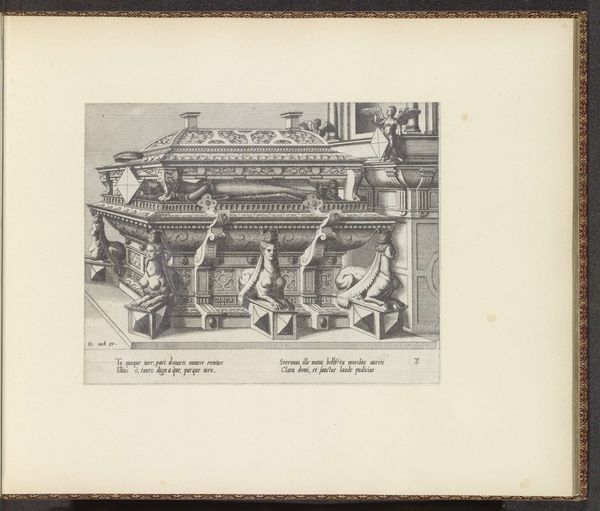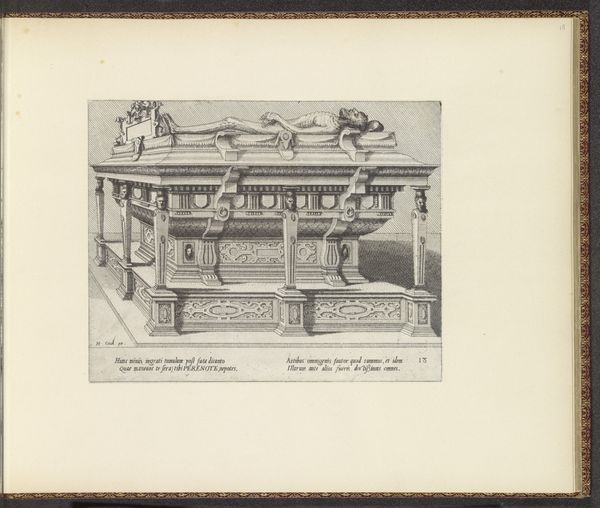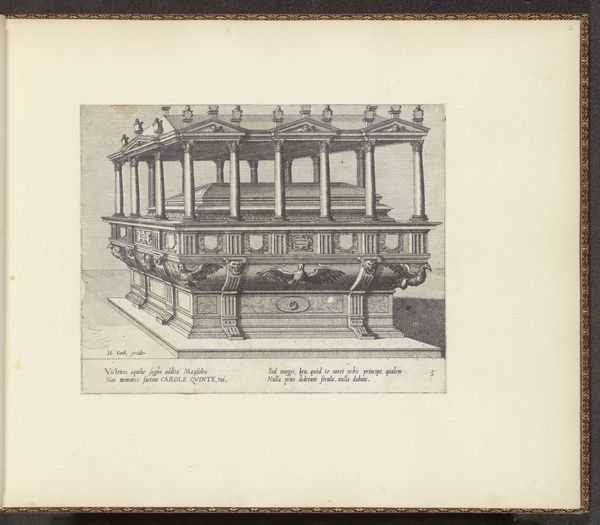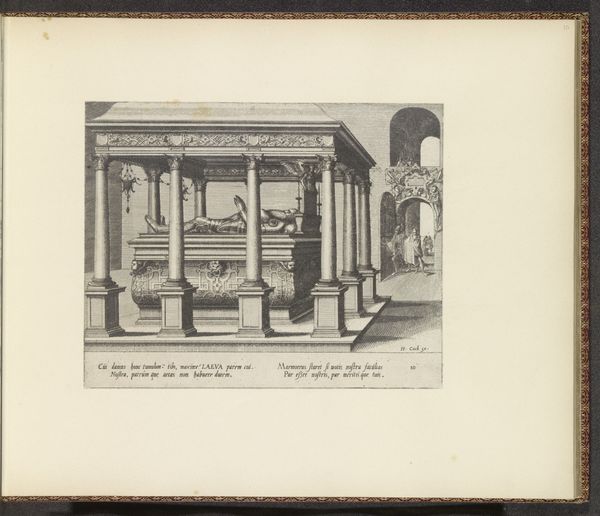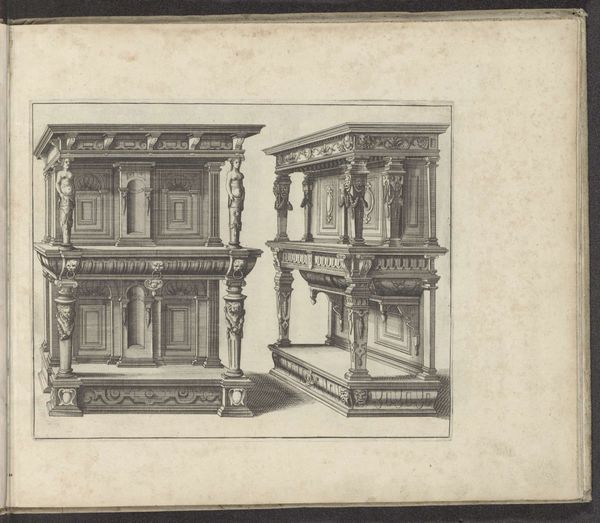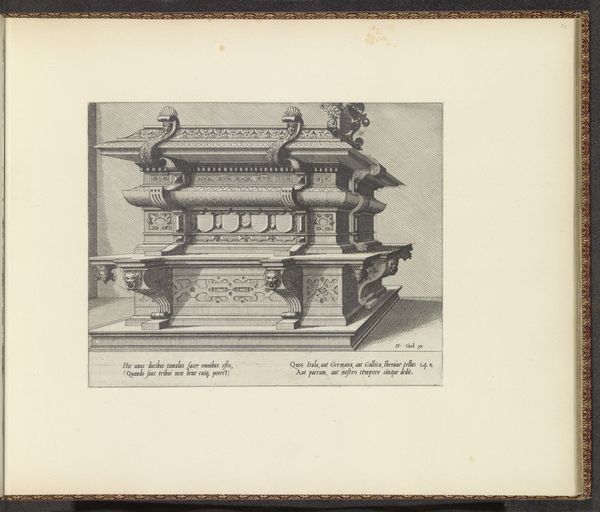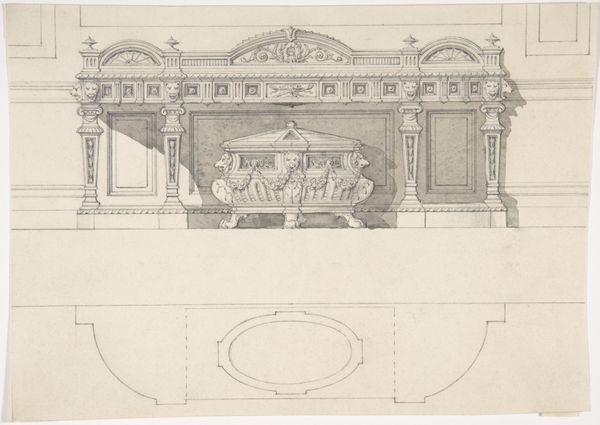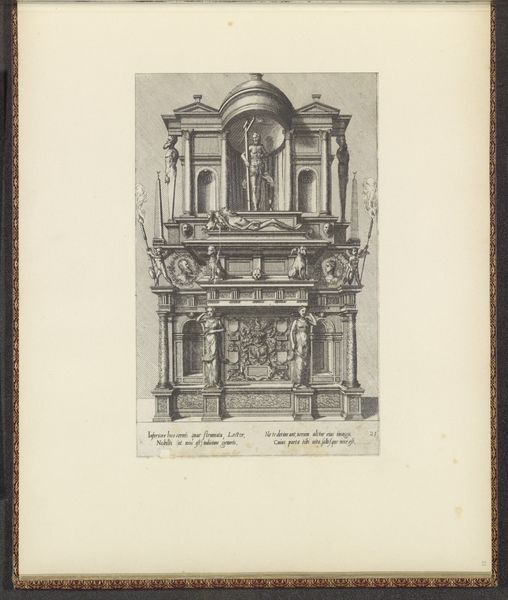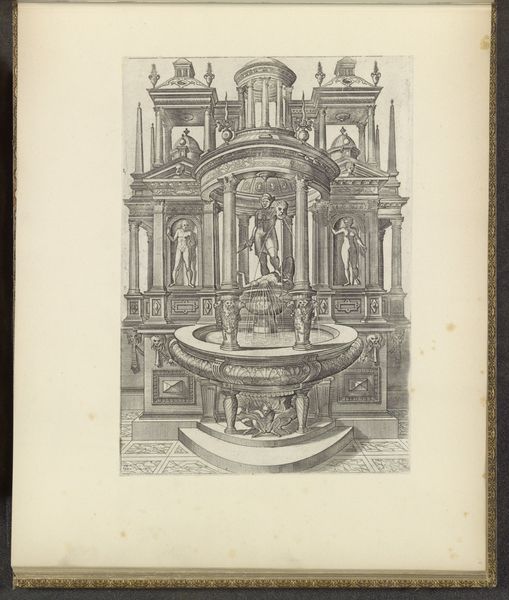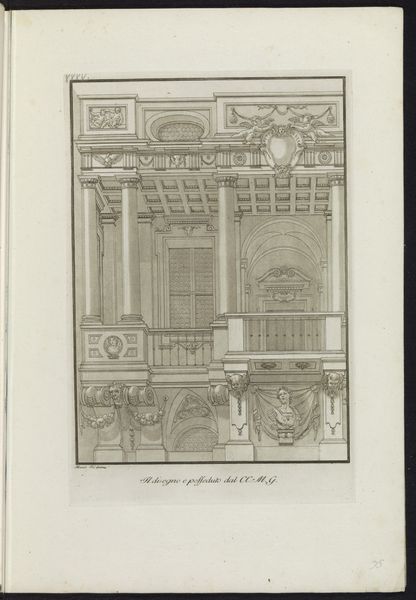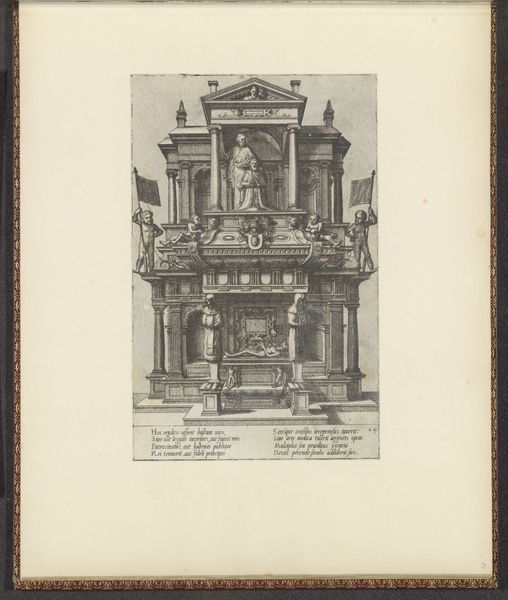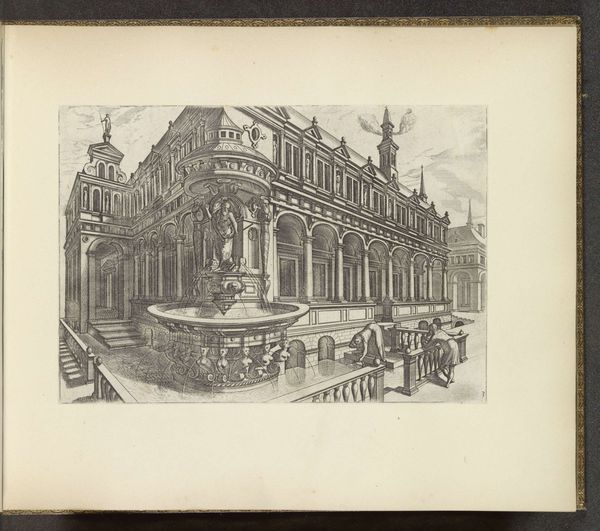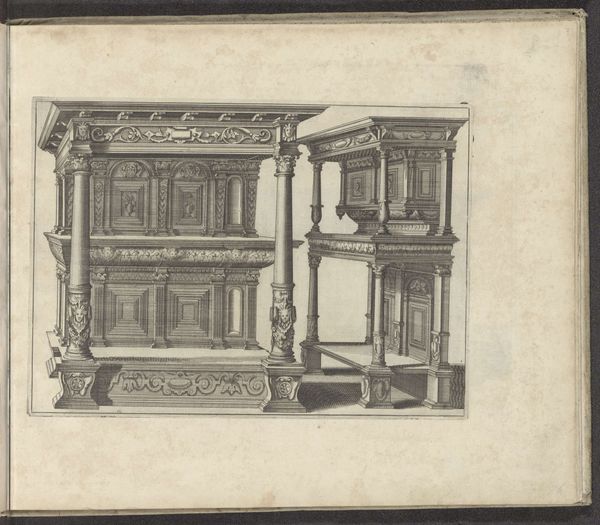
Vrijstaand grafmonument voor een trouwe echtgenote 1563
0:00
0:00
print, engraving
# print
#
dog
#
old engraving style
#
geometric
#
italian-renaissance
#
engraving
Dimensions: height 168 mm, width 212 mm
Copyright: Rijks Museum: Open Domain
Editor: This engraving from 1563, by Johannes or Lucas van Doetechum, depicts a "Freestanding tomb monument for a faithful wife." I'm struck by the dog-like figures at the base, they remind me of ancient Egyptian art. What kind of symbolism might be at play here? Curator: Indeed! The visual language blends the ancient and the Renaissance, suggesting both eternal vigilance and humanist ideals. What emotions are evoked by that juxtaposition? Editor: A sense of solemn respect and enduring love, but there’s also something…imposing about the monument’s scale, almost defiant against death. Curator: Exactly. Note how the artists combine geometric forms with naturalistic details. Those dogs aren’t merely decorative; consider what dogs represent: loyalty, protection, grief. The choice to portray these canines emphasizes not just mourning but the continuity of devotion. How do these elements speak to cultural ideals of marriage and remembrance? Editor: It seems that fidelity, both earthly and perhaps spiritual, was incredibly important. Were the figures a common symbol in art? Curator: Images serve to transmit ideals. Here, we see a blending of classical forms with Northern European sensibility. The print disseminates images and concepts. It enables the proliferation of ideals around spousal virtue. Editor: So, the print itself is acting as a sort of monument to this faithful wife, making her an example. Curator: Precisely! Each line and carefully chosen symbol invites reflection on lasting memory. Editor: I’m starting to understand the power of symbols to encode cultural values. Thanks for this interpretation! Curator: And I to see it with fresh eyes!
Comments
No comments
Be the first to comment and join the conversation on the ultimate creative platform.
